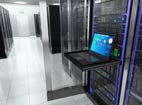Give the IT industry credit for facing up to the challenge of energy consumption over the past few years. Once it entered the popular consciousness that data infrastructure consumes a significant portion of total energy capacity, industry leaders across the board set to work building more efficient infrastructure.
Part of this was simple economics, of course – less energy means lower operating costs. And to be sure, virtualization came along at just the right time to slim down hardware footprints without sacrificing data processing capabilities.
And now it seems some planners are moving onto the next goal, and a rather ambitious one at that: the zero-carbon data center. A colocation firm in Iceland is nearing completion on a facility that relies entirely on hydroelectric and geothermal sources to power its fully modular data infrastructure. The company recently installed a free air cooling system from Eaton-Williams that operates without chillers or mechanical cooling of any kind, instead taking advantage of arctic winds brought in by the Gulf Stream. The Tier-3 facility measures about 23,000 square meters and is backed by redundant UPS supplies for critical systems, with power densities ranging from 4 kW to 16 kW per rack.
Meanwhile, TurnKey Internet recently implemented hydroelectric power at its SSAE 16 Type II data center in Latham, NY, using supplies generated by Niagara Falls. The move came in part through a state-sponsored program to allocate renewable energy to key companies as a means to increase environmental friendliness and create jobs. The facility also uses a combination of solar power and energy-efficient cooling systems in order to achieve a zero-carbon footprint.
And Microsoft is taking a different tack in Cheyanne, Wyoming, where it will use biogas from a local water treatment plant to power on-site fuel cells to run a 200 KW facility. Although some would argue that biogas is not exactly carbon-free, it nevertheless allows the facility to keep off the surrounding electricity grid, which is powered largely by coal. The plan calls for a completely modular data infrastructure, which can be scaled up or down depending upon the available power supply, although the use of fuel cells to store energy should help maintain a steady energy flow.
True carbon-zero operations, then, are only feasible with new construction. But even existing plants can achieve a de facto rating by focusing on three key elements, according to Google. First, utilize any and all energy-reduction techniques at your disposal to lower consumption and increase efficiency. Secondly, employ renewable sources like wind and water as much as you can, and finally, utilize “carbon offset” programs available from federal and state agencies to essentially trade away whatever carbon footprint remains. That last item is a bit of sleight-of-hand as it allows you to buy your way to carbon-free status using the energy savings of others, but in the grand scheme of things it does provide incentives for energy-intensive industries to reduce overall consumption.
Despite the few successes around the globe, the zero-carbon data center will most likely remain a rarity as data infrastructure development continues. Much more reasonable is the carbon-neutral designation, in which energy consumption is at or near that equivalent level of data productivity. This isn’t an exact science, however, and metrics like PUE (Power Usage Effectiveness) and CUE (Carbon Usage Effectiveness) have only limited abilities to measure the true relationship between energy consumption and data output.
But as long as the public sees an industry actively engaged in the drive toward greater efficiency, IT at least remains part of the solution rather than the problem.



